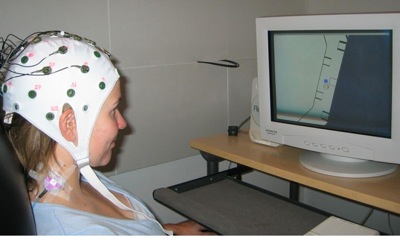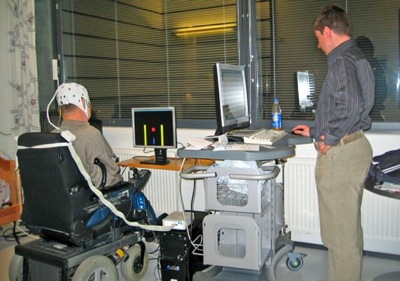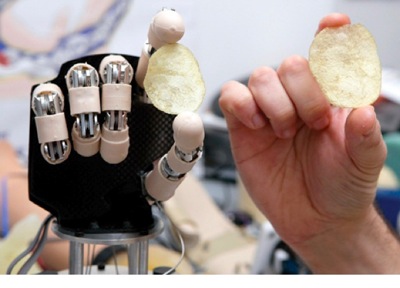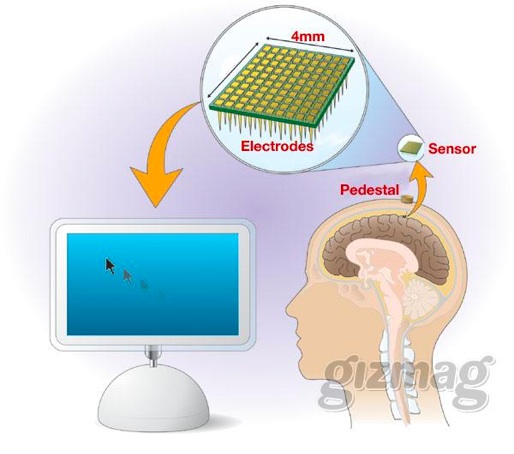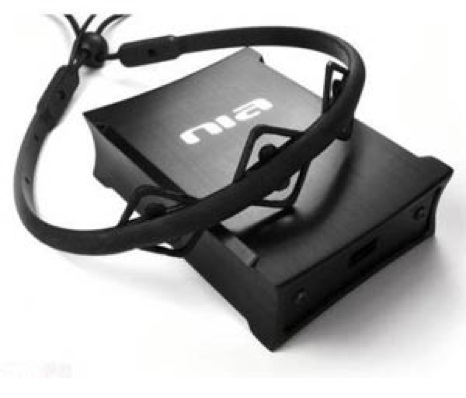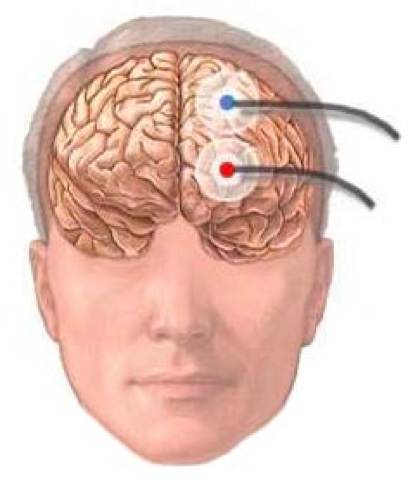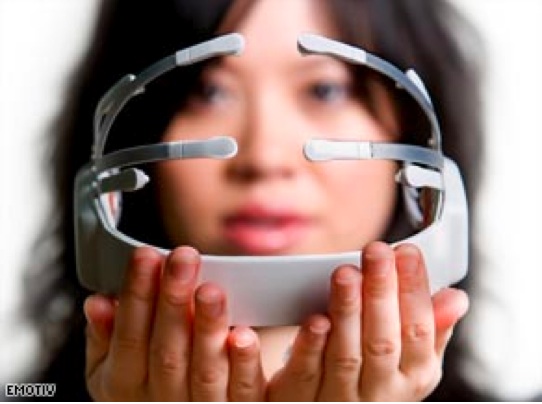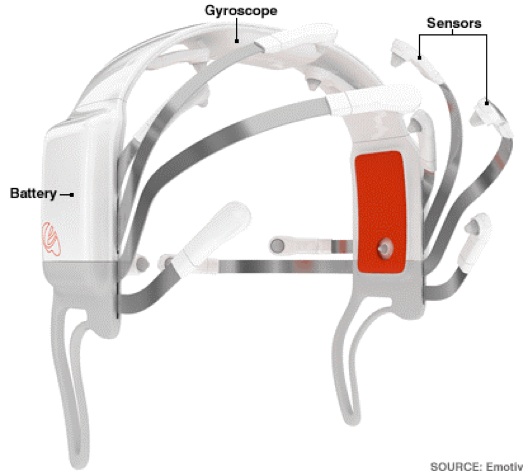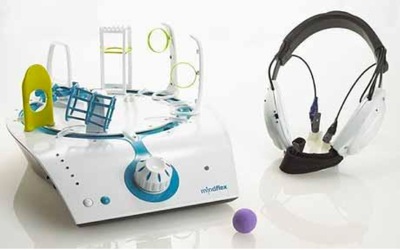
BCI TECHNOLOGY, NOT JUST A DREAMMiguel Cossyleon For thousands of years humanity has dreamed of the kind of power that our brains could store and what we could do with it. Ever since the existence of computers we have dreamed of interfacing our brains with technology. These ambitions are fueled by our imagination and have been portrayed throughout history in science fiction novels, art, films, etc. With the level of scientific research today, we are able to make those dreams possible. We have reached that point where a new era of technology starts; an era in which our brains play a very important role. After years of ambition and dedicated research, we can finally connect our brains with computers and start controlling technological systems merely by thought. The plain idea of being able to control technology just by thinking about it sounds like something out of science fiction novel or plain imagination. In fact 20 years ago, people would have easily said that this is impossible or that it couldn't happen in our lifetime. But that is not true anymore. This technology is real and it is called BCI (Brain-Computer Interfacing). What is BCI you may ask? BCI is a technology used to recognize certain brain wave patterns, and pick up those signals through electrodes placed in key areas of the brain, and then translating those signals by using a special binary code, to ultimately transform those signals into certain actions recognized by a computer. Throughout the past 10 to 15 years the main two fields where BCI has been researched for implementation are the military and the medical fields, but in recent years this technology has expanded also to entertainment, with the attempt to approach all kinds of people. BCI technology also falls into two different types; Invasive and non-invasive. Invasive BCI requires the application of the interface system to be implanted through surgery directly into the brain. It is used mainly for research and applications mainly for the medical field. While non-invasive doesn't require any type of surgery, just the application of a cap like system with a series of receivers that go over the subjects head. It is used mainly for military, and now entertainment purposes, but also widely used in the medical field. Medical Field
Until now probably the most important developments on brain-computer interfaces have occurred on the medical field. In 1987, Dr. Philip Kennedy founded a company to develop a brain-computer interface. The devices created by Kennedy and his company can decode some of the conscious intentions conveyed by neural signals. The signals can control computers, wheelchairs [1], and prosthetic limbs, spell out words, for those who suffer of terrible disorders like “locked-in syndrome” where their bodies are completely immobilized or are unable to speak. Although his work is aimed at the severely disabled and locked-in, Kennedy knows that BCI technology will have a major role not only on the disabled but also on the well-bodied, and he waits for the day where cyborgs will qualify as a branch of life. “By connecting intimately with computers, we will take the human brain to a new level,” he says. “If we can provide the brain with speedy access to unlimited memory, unlimited calculation ability, and instant wireless communication ability, we will produce a human with unsurpassable intelligence. We fully expect to demonstrate this kind of link between brain and machine.” (Baker, 26/9/2008, The rise of the cyborgs)
Figure 1: Subject is learning to control a robot wheelchair simulator while receiving haptic feedback to the lower neck. Copyright © 2006 by LCE.
In 1996 the FDA gave Kennedy the green light for human trials, and his first great triumph came with his test subject Jonny Ray, a 53 year old man that suffered of locked-in syndrome after having a stroke while talking on the phone. Kennedy and neurosurgeon Roy Bakay implanted a Neurotrophic Electrode near the part of Ray's brain that controlled his left hand. The outer end was attached to an amplifier and radio transmitter on his skull under the scalp (invasive BCI system). The next step was encouraging Ray to think about moving the computer mouse with his hand [3]. Over time, the computer began to obey Ray's neural signals, and within six months Ray was moving the cursor on the screen through intention alone, that way being able to spell out words and communicate [2]. When Kennedy asked him what he felt when moving the cursor, Ray spelled “NOTHING”. Ray had learned to control the cursor without thinking about moving his paralyzed arm, his brain was communicating directly with the computer. (Baker, 26/9/2008, The rise of the cyborgs)
Figure 2: The user has an EEG cap on. By thinking about left and right hand movement the user controls the virtual keyboard with her brain activity. Copyright © 2003 by LCE.
Figure 3: Tetraplegic patient attempts left or right hand movements and tries to move the circle from the middle of the screen to the target Copyright © 2005 by LCE.
In January 2008, neuroscientist Miguel Nicolelis, working with the Computational Brain Project of the Japan Science and Technology Agency, took another step forward on BCI technology with Idoya, a rhesus monkey trained to walk upright on a treadmill for treats. Electrodes were implanted in the part of Idoya's brain that controls leg movement; these devices recorded the activity of 250 to 300 neurons that fired when her ankles, knees, hip joints, and feet were about to move. The system transmitted the predictions over a high-speed internet connection to Kyoto, Japan, and into the actuators of a robot named CB-1. Idoya walked and so did CB-1, in perfect sync. This demonstrated that implant technology could enable brainpower to control an object just as easily as a life-size mechanical arm in a very natural manner (Baker, 26/9/2008, The rise of the cyborgs). Meanwhile in Pisa Italy, a team of scientist led by Paolo Dario, a professor of biomedical robotics at the SsSA in association with DARPA (Defense Advanced Research Projects Agency), has unveiled the first BCI prosthetic hand [4]. The Cyberhand has several mechanical advances, like five independently moving fingers, and 16 degrees of freedom and the control in pressure, making it able to even pickup delicate object without crushing them. (Baker, 3/3/2006, The magic touch)
Figure 4: Cybergand holding a potato chip just like the normal hand at the side, showing that there is almost no difference in movement from one to the other.
BrainGate
At Brown University, neuroscientist John Onoghue is moving ahead with BrainGate [5], an implantable, brain-computer interface the size of an aspirin. “BrainGate has been clinically tested on humans by the American company Cyberkinetics, the candidates are quadriplegics that are completely paralyzed the unobtrusive connection between the brain of a severely disabled person and a personal computer” says Tim Surgenor, President and CEO of Cyberkinetics. “We [hope] to provide paralyzed individuals with a gateway through which they can access the broad capabilities of computers, control devices in the surrounding environment, and even move their own limbs [in the future].” (12/7/2004, ‘Brain Gate'…)
Figure 5: Example of the BrainGate interface, and how it is implanted in the brain. So far, three patients implanted with BrainGate can voluntarily modulate several dozen neurons sufficiently to type on a screen, move a prosthetic hand, or control a robotic arm. Erick Ramsey [6] became the first subject for BrainGate after suffering a terrible car accident at age 16 which left him in a locked-in state. In 2004 a neurosurgeon on Kennedy's team inserted an electrode in the part of Ramsey's cortex where the signals were most dense. Then an amplifier and transmitter were screwed onto the top of Ramsey's skull. Now Ramsey is able to change the channel and volumes on a TV, read e-mail, and talk through a voice synthesizer just with his brain. The technology driving this breakthrough in the Brain-Computer Interface field has a myriad of potential applications, including the development of human augmentation for military and commercial purposes. (Baker, 26/9/2008, The rise of the cyborgs)
Figure 6: Erick Ramsey, a 25-year-old quadriplegic, is the first human fitted with the BrainGate Neural Interface. The Military Field
The Military field is very much bounded to the medical field for the simple reason that after restoration of the human body, augmentation of the soldier could be just a few steps away. It's for this reason that the Brown University Program was partially funded by DARPA. The government is well known for its interest in new technologies that can enhance the military. For a number of years DARPA has been interested in Brain-Computer Interfaces (BCI) for military applications like wiring fighter pilots directly to their planes to allow autonomous flight from the safety to the ground, and streamlined communications, such as in military plots' activation of jet defensive mechanisms. This might remind you of movies such as 1980's Firefox with Clint Eastwood, where Eastwood steals a prototype plane that is thought-controlled. But this isn't all there are several military research programs that we may never know about until some of them are releases on to the battlefield. One of the latest Army projects on BCI technologies was released for research to the University of California Irvine (UCI). Last year, UCI was awarded a $4 million contract from the U.S. Army to begin researching the neurocientific and signal-processing foundations of synthetic telepathy, this to be applied on soldier's helmets to allow silent brain waves for secure communication among troops. The army's initial goal is to capture the distinctive fingerprints that flash through a brain when someone is talking to himself with a sophisticated piece of software that then translates the waves into audible radio messages for other troops in the field. The main goal of this project is to make it possible for a soldier to send radio commands to one or many comrades by thinking of the message he wanted to relay and who should get it. Initially, the recipients would most likely hear transmissions rendered by a robotic voice via earphones. But scientists eventually hope to deliver a version in which commands are rendered in the speaker's voice and indicate the speaker's distance and direction from the listener. The main challenge is to develop software able to pinpoint the speech-related brain waves picked up by the 128-sensor array that will be buried inside a helmet. Also another challenge is that because every person's EEG is different, soldiers using “thought helmets” will have to be trained so that computers intercepting their inspoken commands recognize each user's unique mental pattern. Ultimately, the Army hopes the project will “lead to direct mental control of military systems by thought alone. This and many other secret projects that might give a soldier bionic vision, and hearing, telekinetic powers drives us to the conclusion that the super soldier is on the drawing board, and on the way. (Thompson, 14/9/2008, the army's…mind control program) Gaming & Entertainment
BCI technology has the capabilities of becoming a multi -billion dollar industry, and it is for that matter that the technology is being introduced now to a practically new but fast growing field: entertainment. The goal of BCI on entertainment is meant to reach all kinds of people from little kids that soon will learn how to use the brain, to videogames, and giving options that may even attract adults. by the end of 2009 there are going to be several BCI systems available for the general public for no more than $300 dollars, moreover without even the necessity of having surgery since this new systems are non-invasive BCI Systems . This Brain-Computer Interface which is already on the market is aimed to reach the gaming community. The NIA, short for Neural Impulse Actuator, is the one and only BCI system directed to the public, specially the gaming community that is already on the marker, for just about $149 dollars [7]. The user can bind these signals to any keystroke using the driver and configuration software. The NIA works by detecting the neural biopotentials in the body using a set of three sensors attached to the front of a headband, that are than translated trough a wire to a small box that translates the signals. Biopotentials are electric quantities such as a voltage, current or field strength, that are caused by biological chemical reactions. Significantly what the NIA does is that rather than reading or translating your thoughts, the system detects three types of biosignals generated by your brain, facial muscles and eye muscles by a special headband, all of this taking place at the cortex of the human brain. What this means is that rather than commanding the NIA with direct thoughts, you will need to learn how to isolate and control the specific signals it can detect, in a similar way to how we can isolate and control the signal used to move a leg or flex a muscle. More specifically, the NIA is able to detect upper facial muscle movement and eye movement as well as Alpha and Beta Brain rhythmic activity [8]. (OCZ technology, 21/7/2008, NIA)
Figure 7: NIA gaming BCI system, headset, and signal translation box.
Figure 8: Example of how NIA works on the brain, receiving Beta, and Alpha signals from the Cortex. But not because this is the only BCI offered to the public means that you have to rush and get one of these right away. Since more and more sophisticated systems are coming, like the long awaited EPOC by company Emotiv [10] [13]. The EPOC will be one the most sophisticated BCI systems offered to the public, waiting for its predicted release on the summer of this year for just $299 dollars. “Emotiv is a neuro-engineering company and we've created a brain computer interface that reads electrical impulses in the brain and translates them into commands that a video game can accept and control the game dynamically” said Tan Le, president of the US/Australia firm Emotiv [12]. In between other things, the EPOC can be used to give authentic facial expressions to avatars of gamers in virtual worlds or in chat rooms for that matter, if the player smiles, winks, laughs the headset can detect the expression and translate it to the avatar in the game. The EPOC can also read emotions of players and translate those to the virtual world, by changing color and difficulty on the game, making the player submerge in a higher level of realism. The system can detect more than 30 different expressions, emotions and actions. Gamers will be able to experience telekinesis for the first time, by being able to move objects in the world just by thinking about it. Also in an effort to approach all kind s of public the EPOC will come give the user access to a owners only webpage where, the user will be able to control several aspect of their computer trough the EPOC, like playing music, video, organize photos, or other types of media either by thinking of the action or depending on how the user is feeling [9]. “Being able to control a computer with your mind is the ultimate quest of human machine interaction” said Tan Le “This is just the beginning of a new era…” Paul Ledak, vice president, IBM Digital Convergence said brain computer interfaces, like the EPOC headset are an important component of the future 3D Internet and the future of virtual communication [11]. (Waters, 20/2/2008, Brain control headset for gamers)
Figure 9: President of the firm Emotiv, Tan Le wearing the EPOC and controlling her media by thought
Figure 10: Tan Le with the EPOC system on her hands as if she was offering it to the world.
Figure 11: Michael Rowe, representative of IBM announces IBM's and Emotiv partnership, at the press release of the EPOC BCI System.
Figure 12: Demonstration of Emotive's EPOC at the press release of the system
THOUGHT-CONTROLLED GAMING HEADSET
Other BCI systems to be released this year are aimed at the younger public, and for different types of BCI interaction. The company behind this is Mattel, the world's largest toy manufacturer, in collaboration with NeuroSky labs. Together they have created Mind Flex [14], a mind game where players have to concentrate enough energy to power a fan which in turn causes a ball to levitate and move through a series of hoops. The Mind Flex comes with a brain-scanning headset which measures brainwaves and turns them into energy. The game is expected to hit store shelves in the US by Christmas 2009, for around $80 dollars (Khan, 1/6/2009, Mind Game…). One other product NeuroSky has cooperated to develop is called the Force Trainer [15]. The Force Trainer is a toy based on the Star War series that will allow the user to experience the Force. The toy comes with a headset that uses brain waves to allow players to manipulate a sphere within a clear 10-inch-tall training tower. In the Force Trainer, just like in the Mind Flex, a wireless headset reads your brain activity, that if you focus well enough, the training sphere, which looks like a ping-pong ball, will rise in the tower, thanks to an air flow control located at the base of the tower. The toy is also expected to hit the store shelves by Christmas 2009 for around $100 dollars. “We are putting this exciting [BCI] technology into everyone's living room.” Says Greg Hyver, developer at NeuroSky. (Snider, 1/7/2009, Toy trains ‘Star Wars' fans to use The Force)
Figure 14: Mind Flex, toy made by Mattel that allows the user to control a ball around a series of hoops, by wearing a headset that translates brain waves.
Figure 15: kid playing with the Force Trainer, a Star Wars teamed tower that allows the user to levitate a ball by wearing a headset that translates brain waves.
BCI research is extensive and rapidly growing in several key areas like in The Medical, Military, and entertainment fields mainly, even though out knowledge on BCI is already extensive, it is nothing compared to what we might be able to do with this technology 20 years from now. BCI technology will keep expanding onto different fields, and it is predicted that within a few years it is going to have a rapid adaptation onto robotic and automotive industries. Right now we are just at the premise of a new era, that the current developments on Brain-Computer Interfaces are just the first step of many to be accomplished, on becoming a successful cyborg society. This is just the beginning. Works Cited
Waters, Darren. “Brain control headset for gamers.” BBC News. 20/2/2008: Feb. 2009 http://news.bbc.co.uk/2/hi/technology
|











